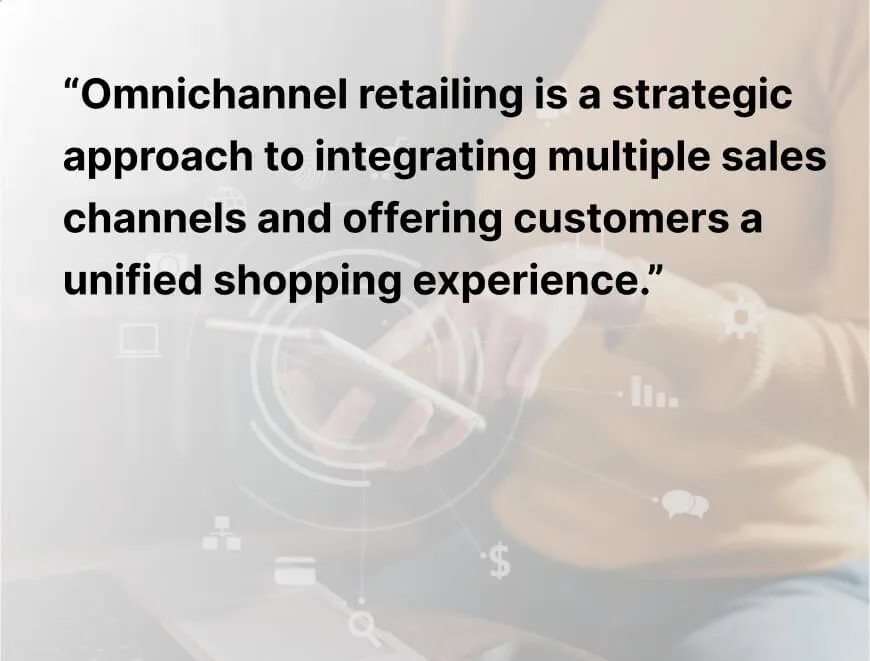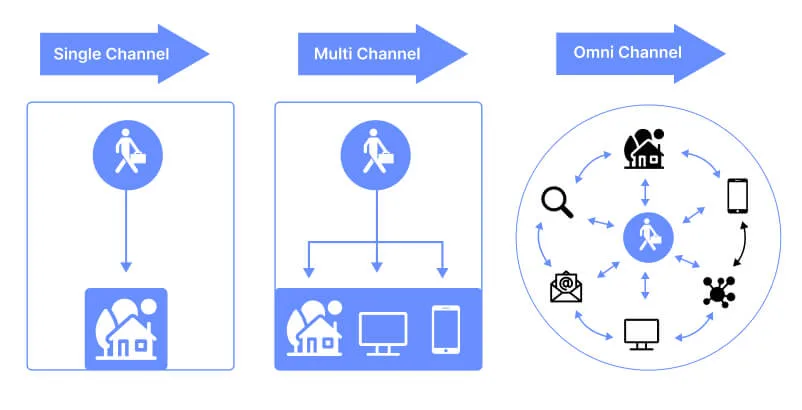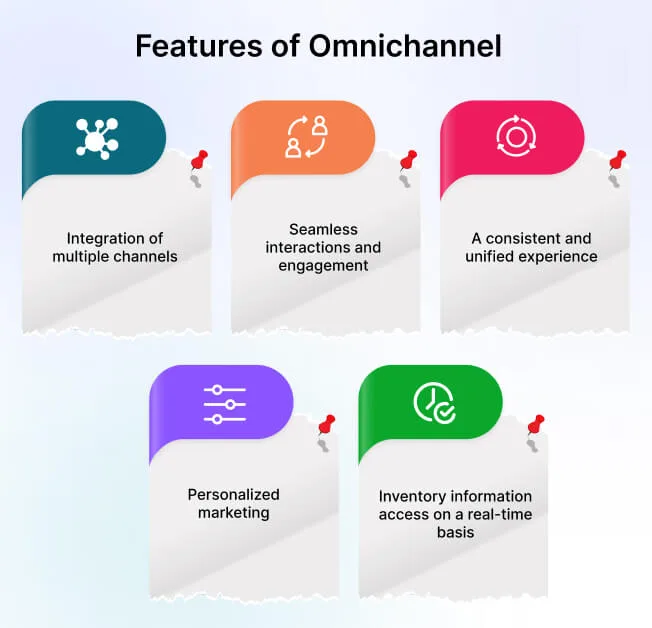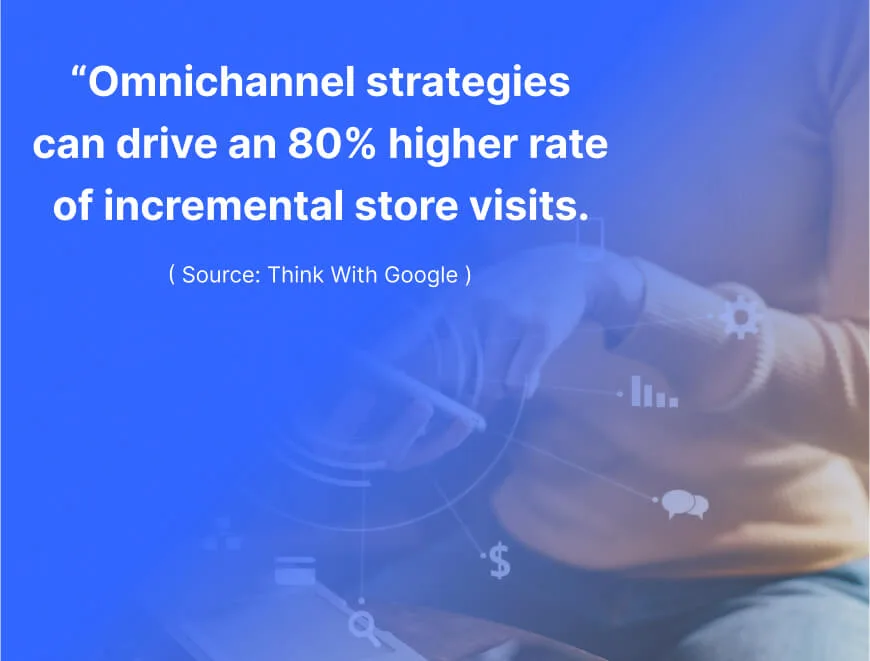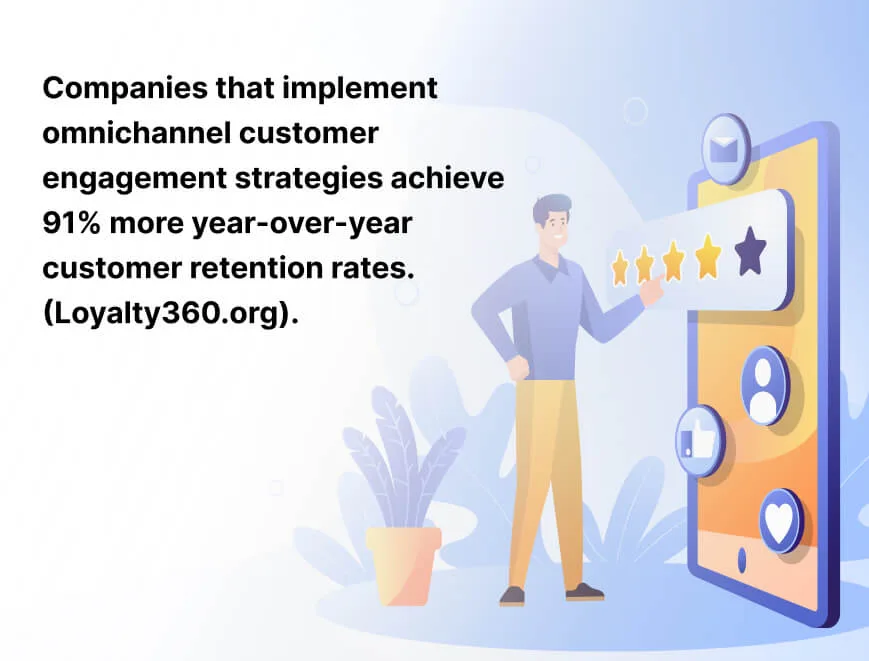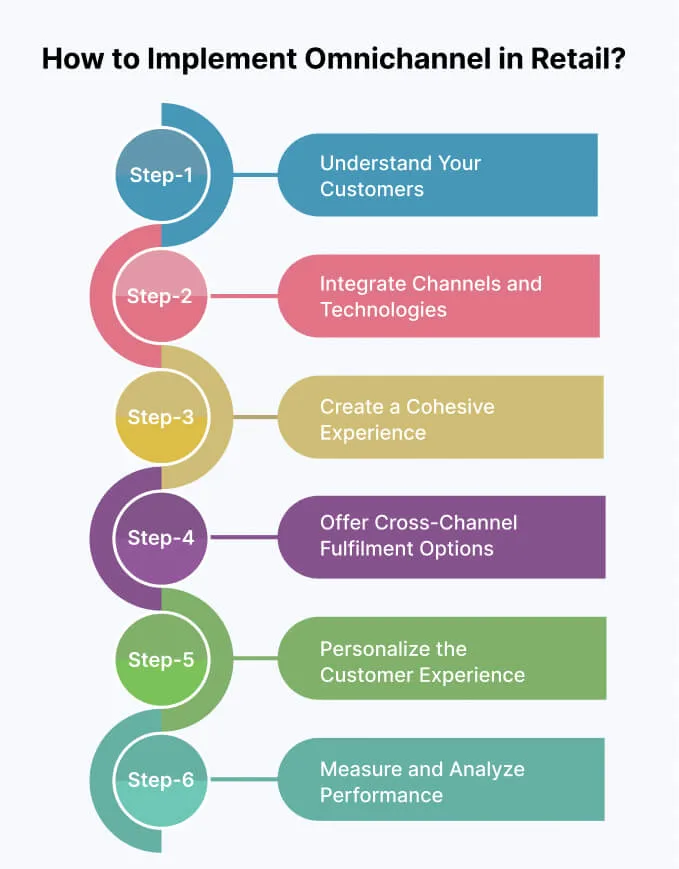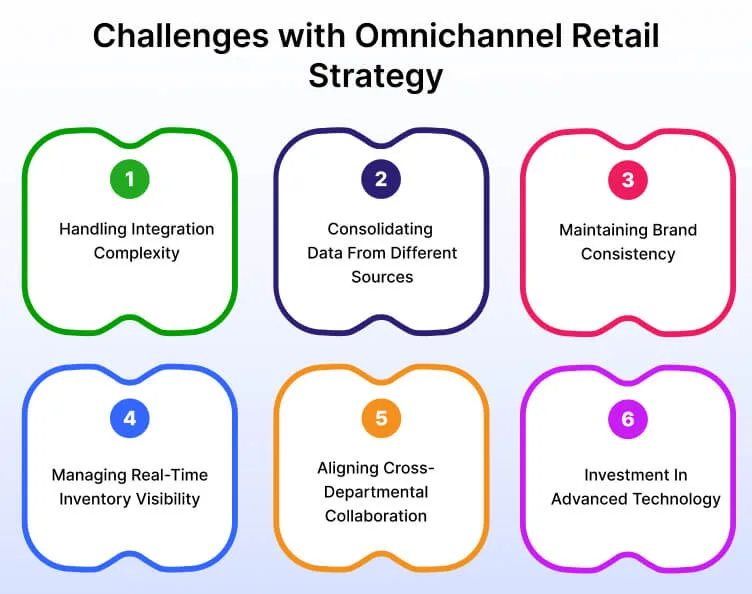Buyers are quite evolved these days, aren’t they?
They want shopping experiences to align with their preferences and expectations. They also want the freedom to shop anytime, anywhere, and through the channel of their choice. Whether they browse products online, visit a brick-and-mortar store, or purchase through mobile apps, they want consistent experiences across touchpoints. Omnichannel retail provides all this, and more.
But the question is, how does omnichannel retailing fit into the needs of well-informed and research-oriented buyers of the new generation?
Well, most buyers today use multiple channels to collect information, compare products, and make rational purchase decisions. They need access to product information across all touchpoints irrespective of the channel they use. Retail omnichannel ensures all this, helping customers move between online and offline channels effortlessly.
In this blog, we will discuss the omnichannel retail model in detail, understand its benefits, analyze its trends, and find out how a business can devise a strategy for it.
Before moving further, let’s first look at the definition of omnichannel retail…
What is Omnichannel Retail?
Omnichannel retailing is an effective customer experience strategy that gives customers the flexibility to connect and interact with a brand through their preferred channels. It’s a strategic approach to integrating multiple sales channels and offering customers a unified shopping experience.
When a business implements an online retail strategy, customers get the freedom to switch between channels seamlessly, resulting in more tailored and personalized experiences for them. This approach recognizes the fact that customers want to interact with brands across channels and touchpoints without losing the cohesive experiences they should get.
Unlike multi-channel retail where many channels are available for customers without cohesion, here, all channels merge to ensure consistent messaging and service. In essence, this approach rises above the channel restrictions to create a holistic shopping journey for customers.
Omnichannel Retail Vs Multi-Channel Retail Vs Single-Channel
Retailing is going through seismic changes. Its focus is gradually shifting to keep pace with the changing needs of new-age shoppers. The emergence of retail omnichannel reflects how far the market has come in terms of accommodating evolving customer preferences.
Let’s look at how the omnichannel retail model is different from the multi-channel and single-channel models –
- Single-Channel Retailing – This approach refers to the practice of retailing through a single sales channel. So, in this model, customers have only one avenue to interact with the retailer, and the avenue could be anything be it an online store, a physical store, or a catalog.
- Multichannel Retailing – This approach refers to the practice of retailing through multiple channels. So, in this model, customers are not restricted to just one channel and can connect with the business through multiple channels. However, channels are not connected in multichannel retailing and may operate independently. This could lead to variations in prices, strategies, and experiences across touchpoints.
- Omnichannel Retailing – Both multi-channel and omnichannel models are similar on many levels but have just one major difference: all the channels in the omnichannel model are integrated to ensure a unified shopping experience. So, unlike the multichannel, here customers can switch between channels and enjoy consistency in pricing, branding, and experiences.
Key Features of an Omnichannel Retail Model
Omnichannel retailing is based on the premise of enhancing the customer experience during shopping. It’s an approach to keep pace with the evolving needs of modern buyers. However, this form of retail needs a perfect alignment between various elements.
Here are some of the key features of an omnichannel retail model –
- At the core of omnichannel retail lies the integration of multiple channels, including online stores, physical shops, mobile apps, social media channels, and more.
- In this type of retailing, customers are assured of seamless interactions and engagement with a brand regardless of the channel they choose.
- A consistent and unified experience is delivered across all channels that make shopping a truly hassle-free experience for shoppers.
- Retailers that follow the omnichannel approach leverage analytics to gain insights into customer preferences, needs, and behavior.
- This approach is helpful for businesses in terms of adopting personalized marketing and ensuring tailored solutions to individual customers.
- When the retailing model is omnichannel, customers have the option to access inventory information on a real-time basis and choose their preferred channel for products.
- Omnichannel retailers can easily cater to the diverse preferences of shoppers and provide them with a long list of options, such as online buying, in-store shopping, home delivery, and more.
Benefits of Omnichannel Retail Management
Omnichannel retailing has changed the way people shop. It ensures benefits to both retailers and customers, by ensuring a holistic and convenient form of shopping. More businesses now look to leverage this powerful approach to retailing to drive sales and foster loyalty.
Here are some of the benefits of omnichannel retail management –
- Convenience to Shopping – Customers now have the choice to browse, purchase, and interact with the brand effortlessly and conveniently. They can expect, and rightfully get an integrated shopping experience across channels.
- Flexibility of Channels – Gone are the days when customers could only buy from a physical store or an online platform. Today, they can choose their preferred shopping channels and also decide which fulfillment option suits them the best.
- More Sales Opportunities – Omnichannel retailing not only offers multiple channels for customers but also expands the reach and ambit of retailers. Since customers can buy from a variety of channels, this creates more sales opportunities for retailers.
- Tailored Marketing Strategies – In the omnichannel retail model, customer data is integrated across channels which helps retailers adopt tailored marketing strategies. When marketing is tailored to the specific needs of the individual, it leads to improved business performance.
- Improved Customer Retention – Customers can stick with the brand and do repeat business when the branding is consistent and the service is uniform across channels. This kind of behavior can lead to enhanced loyalty, resulting in an improved retention rate for the business.
- Better Inventory Management – Retailers who implement the omnichannel approach can optimize inventory levels across channels. They can adopt a centralized inventory management to provide product availability information as and when customers need it.
Understanding Omnichannel Retail Experience with Key Stats
Omnichannel retailing is the latest trend in shopping. It ensures a smooth transition for customers when they shop across channels. More retailers plan to fix the gap between various touchpoints to deliver value and meet the expectations of customers.
Let’s look at some key stats to understand the dynamics of the omnichannel retail experience for customers –
- 73% of consumers use multiple channels during their shopping journey. (Harvard Business Review)
- Companies that implement omnichannel customer engagement strategies achieve 91% more year-over-year customer retention rates. (Loyalty360.org).
- 80% of customers are more likely to make a purchase when brands provide them with personalized experiences. ( Epsilon)
- Omnichannel strategies can drive an 80% higher rate of incremental store visits. ( Think With Google )
- More than six out of 10 customers participate in omnichannel shopping. (Fit Small Business)
How to Implement Omnichannel In Retail
A successful omnichannel retail strategy can enhance the customer experience and drive sales. It can also foster brand loyalty for your business. All this is achieved only when your business does careful planning and execution across various channels. The key is to refine your approach and keep an eye on the market trends.
Let’s look at the steps involved in building an omnichannel retail strategy –
Step 1 – Understand Your Customers
Conducting thorough market research is the starting point when you set out to create an effective omnichannel retail strategy for your business. It is done to understand the preferences and behaviors of your target audience. The research is also helpful for decoding the shopping habits of your customers across channels.
To understand your customers,
- Collect data on their demographics
- Analyze their browsing habits and purchasing patterns
- Understand their preferred channels
- Gain insights into their needs by using customer feedback
Step 2 – Integrate Channels and Technologies
It’s important to assess the various avenues through which your customers engage and interact with your brand. This will help you better understand the strengths and weaknesses of each channel. After all, an effective omnichannel strategy is built when there is a sync between communication channels. That’s why you first need to evaluate your existing touchpoints. You also need to implement systems and technologies that support seamless integration between these touchpoints.
To integrate channels and technologies,
- Consider investing in an omnichannel retail software solution
- Focus on centralizing inventory management
- Integrate customer data and fulfillment options for customers
Step 3 – Create a Cohesive Experience
Creating a unified brand experience for customers is one of the essentials of an omnichannel strategy. Make sure you develop a consistent brand messaging that resonates across all channels and touchpoints. It’s equally important to ensure customers can switch between channels with ease and make purchases from the channel of choice.
To create a unified brand experience –
- Convey a consistent brand messaging across channels and touchpoints
- Strike a balance between elements of branding to deliver a uniform experience
Step 4 – Offer Cross-Channel Fulfillment Options
Customers should be able to seamlessly move through channels and also shop without any hassle. They also expect to receive orders from the channel of choice. To achieve this goal, you need to enable cross-fulfillment options. You need to make sure all touchpoints are aligned and can meet the shopping needs of customers.
To offer cross-fulfillment options,
- Implement features that enable buying from virtually every possible avenue customers can think of
- Let customers buy online directly from the store, visit and pick in-store, get items shipped from the store, have same-day delivery, and so on.
- Give customers real-time data on inventory availability across all channels so that they can make choices
Step 5 – Personalize the Customer Experience
A robust omnichannel retail strategy brings you tons of customer data and insights that you can leverage to personalize marketing messages. You can use the data to tailor offers, recommend products, and do promotions as well. More importantly, personalized experiences can help you meet the specific needs of each customer irrespective of the channel they choose to interact with your brand.
To personalize the customer experience –
- Analyze customer preferences and behavior across channels
- Use AI-powered tools such as chatbots to engage with customers
- Deliver offers based on the browsing history and demographic information
Step 6 – Measure and Analyze Performance
Measuring and analyzing performance is the last step in building an omnichannel retail strategy for your business. Here you need to track various KPIs and check if all your efforts are moving in the right direction.
To measure and analyze performance –
- Use analytics tools
- Optimize your omnichannel strategy
- Track engagement and conversion rates
Challenges with Omnichannel Retail Strategy
While implementing an omnichannel retail strategy has various advantages, it also comes with numerous challenges that businesses must handle to provide a seamless experience to customers. These challenges however will require a strategic approach and cross-department collaboration. Only then an enterprise can be sure of driving satisfaction and sales.
Let’s look at the key challenges with omnichannel retail strategy –
- Handling Integration Complexity – Integration is always a big challenge when a business plans to implement omnichannel retailing. Any business may find it hard to integrate different systems, processes, and technologies across channels.
- Consolidating Data From Different Sources – Giving customers the freedom to switch between channels of choice means there will be increased digital footprints, resulting in data overload across avenues. Consolidating these data from multiple channels can always be a big task.
- Maintaining Brand Consistency – A seamless customer experience is delivered only when your business maintains consistency in brand voice and communication across channels. Maintaining consistency will never be easy given the huge diversity in customer expectations and channel capabilities.
- Managing Real-time Inventory Visibility- Customers expect accurate product inventory information across channels as it enhances their shopping experience with the brand. This kind of inventory management is not easy due to siloed systems.
- Aligning Cross-Departmental Collaboration – An effective omnichannel strategy is realized when there is an alignment across departments such as marketing, sales, and IT. Such alignment is never easy given the complex organizational structure and culture in place.
- Investment in Advanced Technology – It takes a robust tech infrastructure to realize the virtues of omnichannel retailing. This will require a big investment in various technologies such as POS systems, CRM software, and other tech innovations.
Omnichannel Retail Trends to Watch Out in 2024
Retailing through omnichannel is on an upward swing. Retailers today continually adapt to changing consumer behaviors and tech advances. They also want to stay relevant with the changing marketing dynamics. This has fueled new trends that must be incorporated into omnichannel strategies to meet the needs of modern buyers.
Here are some of the omnichannel retail trends to keep a watch for in 2024 –
Mobile Commerce to Continue Rising in Scale
A growing number of retailers now focus more on enhancing the mobile shopping experience for their customers. They are not only optimizing their websites and apps for mobile devices but also offering additional features for increased adoption of mobile commerce. That’s why features like one-click checkout and tailored recommendations are more prominent these days than ever before.
AR and VR Technologies to Get More Focus
Buyers have lofty expectations and they want their shopping experiences to be interactive and immersive. To achieve that goal, retailers need to think of integrating Virtual Reality (VR) and Augmented Reality (AR) technologies. That’s why we are set to witness more visual tours of stores, more interactive product demos, and more virtual try-ons.
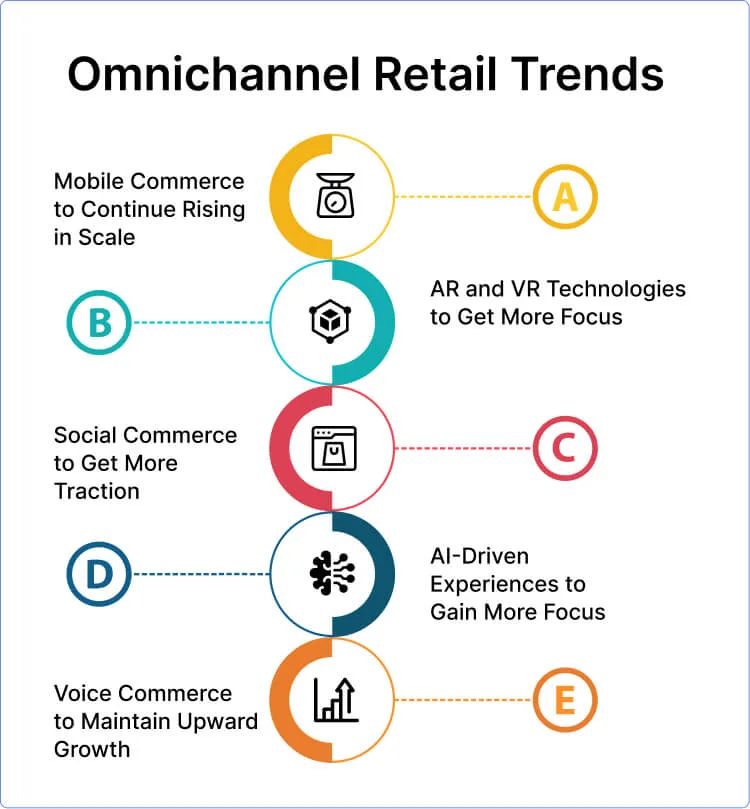
Social Commerce to Get More Traction
Retail omnichannel is reaching a position where the lines between e-commerce and social media are set to get blurred. This is happening because more social channels are turning into customer shopping avenues. Features like live shopping, shop-able posts, and in-app checkout are growing in popularity. Retailers are cashing in on the trends by engaging customers directly on social sites.
AI-Driven Experiences to Gain More Focus
The continuous advancements and emerging trends in AI and Machine Learning are the reasons why retailers focus more on personalization. This is also the reason why offering targeted customer experiences is gaining more popularity among retailers. More companies now use chatbots and live chat software to engage with customers. They also use data analytics to offer individualized service across channels.
Voice Commerce to Maintain Upward Growth
Retailers understand the huge potential and ever-growing craze of voice-activated shopping. That’s why they are integrating voice commerce features into their retail omnichannel strategies. More so, they are also optimizing every aspect of the business for voice search, be it their product listings or checkout processes.
Final Thoughts
Customers are evolving, and so their expectations with shopping. Retail omnichannel is the reflection of modern times and how customers like the freedom to switch between channels.
At REVE Chat, we understand how engagement is at the core of an effective omnichannel retail strategy. That’s why we offer a variety of tools for businesses to engage with their customers better and deliver them the kind of experiences they covet.
Your business can use our AI-powered chatbot to automate tasks across sales, marketing, and support. We also have video chat software, co-browsing software, and a ticketing system to enhance engagement-based workflow.
It’s also possible to add live chat and chatbot together to deliver hybrid support experiences to customers.
With us, you can sign up and check how our tools can add great value to your omnichannel retail model.

